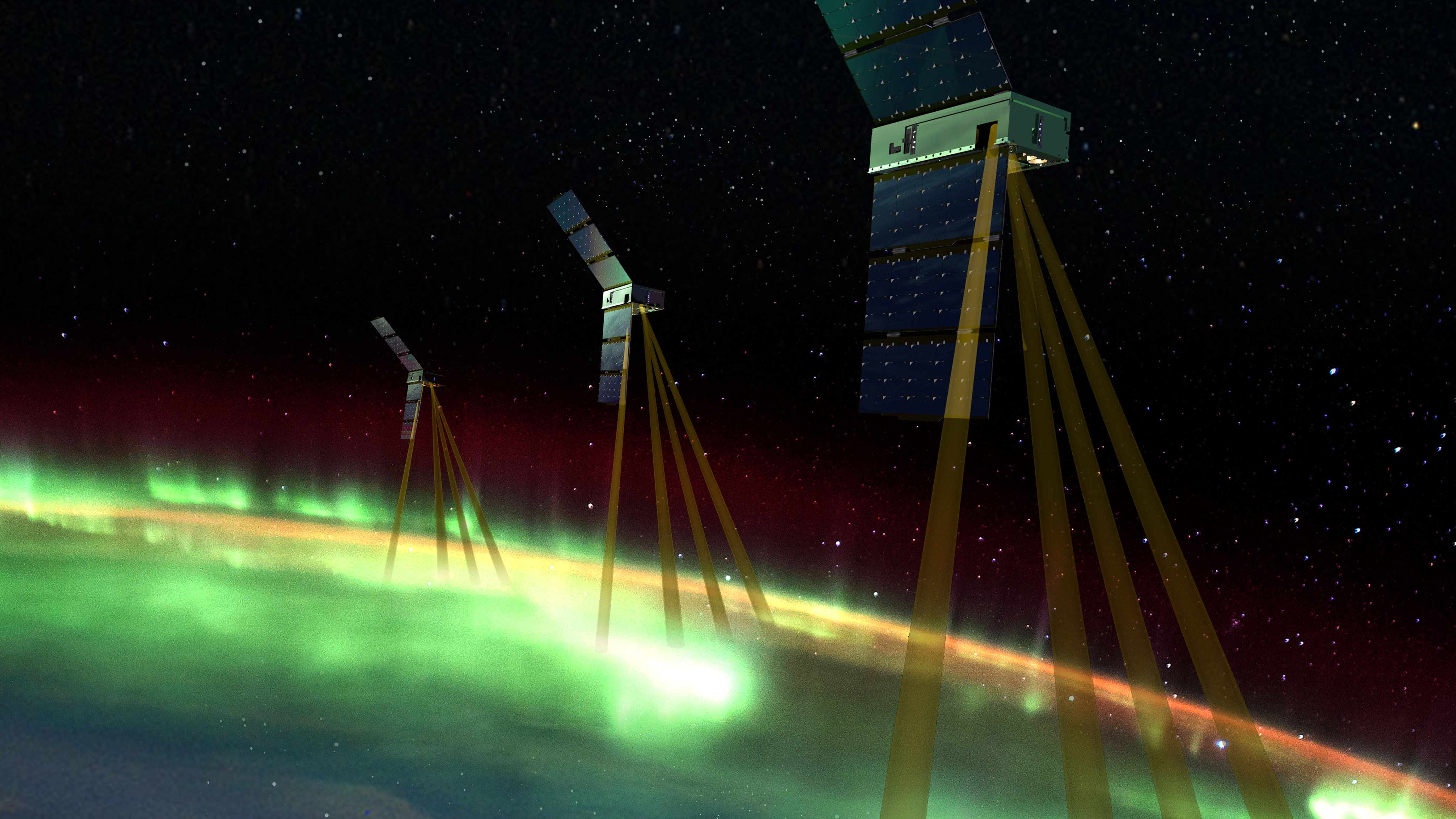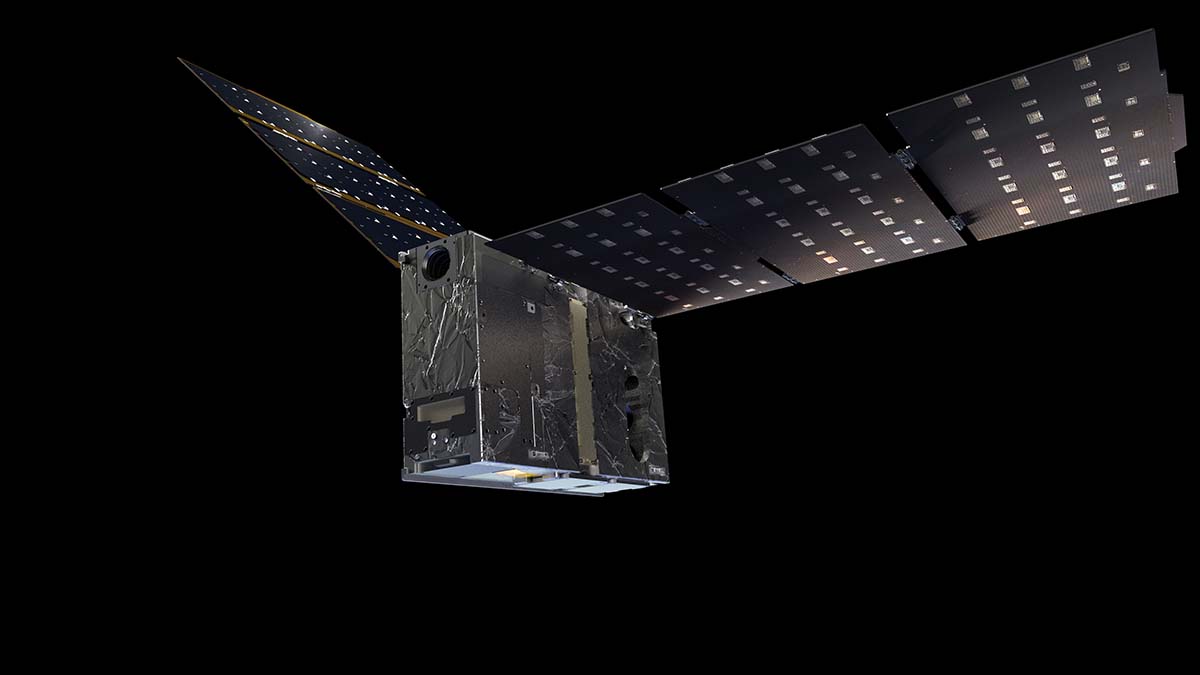Press Release
Johns Hopkins APL Space Weather Mission Selected by NASA
A Johns Hopkins Applied Physics Laboratory-led mission to explore electric currents in Earth’s atmosphere that link the aurora to our planet’s magnetosphere has been selected by NASA to move forward to a scheduled launch in 2024.
The Electrojet Zeeman Imaging Explorer (EZIE) is a set of three SmallSats that will study the auroral electrojet, which are electrical currents flowing about 60 to 90 miles above the poles that link the beautiful aurora to the Earth’s magnetosphere, and which responds to solar activity and other drivers.
The interaction of the magnetosphere and the solar wind — one piece of Earth’s complicated space weather system — compresses the Sun-facing side of the magnetosphere and drags out the nighttime side of the magnetosphere into what is called a “magnetotail.” Auroral electrojets are generated by changes in the structure of the magnetotail. The same space weather phenomena that power the fascinating aurora can cause interference with radio and communication signals and utility grids on Earth’s surface, and damage to spacecraft in orbit.
EZIE will launch no earlier than June 2024; the total mission budget is $53.3 million. The principal investigator for the mission is APL’s Jeng-Hwa (Sam) Yee.

